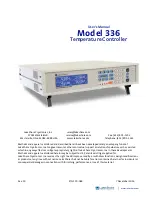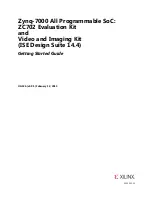
86
8.1.7.3
Industrial pH Electrode Shelf Life and Storage
Rotate and check electrode stock once a year. Prolonged storage on the shelf can cause the
reference electrode to dry out. To avoid this, perform a routine maintenance as follows:
1. Remove the electrode from its storage box and remove the cap.
2. Rinse away any crystals.
3. Saturate the cotton in the protective cap with Electrode Storage Solution (Cat. No.
50301-49).
4. Replace the cap on the electrode.
5. Wrap tape around the joint of the cap edge and the electrode body.
6. Replace the electrode in its storage box and mark the date on the box.
Store the electrode between 0 °C (32 °F) and 50 °C (122 °F).
8.1.8
pH Electrode Cleaning
WARNING
The hydrochloric acid
(HCl) and sodium
hydroxide (NaOH)
used in the procedure
may be hazardous if
inappropriately handled
or accidentally misused.
Read all warnings on the
Material Safety Data
Sheets (MSDS) and
reagent labels.
ADVERTENCIA
El ácido clorhídrico y el hidróxido de sodio que se usan en este procedimiento pueden ser
peligrosos si se usan impropiamente, debido a mal manejo o accidente. Lea toda la informatción
de la Hoja de Datos de Seguridad para este material, y las advertencias en las etiquetas de
los reactivos.
AVISO
O ácido clorídrico e o hidróxido de sódio usados neste procedimento podem ser perigosos se
forem manipulados incorrectamente ou fortuitamente mal utilizados. Leia todas as advertências
e informação das Folhas de Dados de Segurança de Material (FDSM) nas etiquetas do reagente.
ATTENTION
L'acide chlorhydrique et l'hydroxyde de sodium utilisés dans cette procédure peuvent être
dangereux s'ils sont manipulés de façon inappropriée ou accidentellement mal utilisés. Lire
toutes les informations de la fiche de données de sécurité et les avertissements sur les étiquettes
des réactifs.
WARNHINWEIS
Die in diesem Verfahren verwendeten Salzsäuren und Natriumhydroxide können im Falle einer
ungeeigneten Behandlung oder eines zufälligen Mißbrauchs gefährliche Folgen haben.
Beachten Sie bitte alle Materialsicherheits-Datenblätter und die Warnungen auf
der Reagensetikette.
When the electrode response becomes sluggish, the electrode may be fouled or the
glass bulb may be contaminated. Clean or recondition the electrode. Normal cleaning
or reconditioning of the electrode is accomplished in the following steps. Immerse the
electrode tip in 0.1N HCl for two minutes. Follow by immersion in 0.1 N NaOH and again
in 0.1N HCl, each for a two-minute period. Rinse with water, and soak in water for at least
15 minutes. Oils and fats can be removed by immersing the electrode tip in a detergent
solution such as Alconox (Cat. No. 20880-00). Use a brush or ultrasonic bath if necessary.
Avoid scratching the glass bulb. Organic films may be removed from the glass bulb by
using an appropriate solvent, such as methanol or acetone.
Содержание EC1000
Страница 2: ...2...
Страница 8: ...8...
Страница 12: ...12...
Страница 14: ...14...
Страница 16: ...16...
Страница 18: ...18 Figure 1 Controller Front Panel...
Страница 20: ...20 Figure 2 Pump Module...
Страница 24: ...24 Figure 6 pH Control Loop...
Страница 54: ...54...
Страница 56: ...56...
Страница 58: ...58 Figure 12 Controller Installation Panel Mount...
Страница 61: ...61 Figure 15 Installing the pH ORP Electrode Figure 16 Flow Thru Cell...
Страница 70: ...70...
Страница 73: ...73 6 4 Calibration See Section 2 3 Calibration Figure 21 Priming Tee Operation...
Страница 74: ...74...
Страница 80: ...80...
Страница 83: ...83 Figure 24 Sensor Replacement...
Страница 85: ...85 Figure 25 Hach One pH Process Electrode...
Страница 89: ...89 Figure 26 Pump Module Plumbing Diagram...
Страница 102: ...102...
Страница 103: ......
Страница 104: ......
Страница 105: ......
Страница 106: ......
Страница 108: ...108...
Страница 112: ...112...
Страница 116: ...116...
Страница 122: ...122...
Страница 123: ...123...
Страница 124: ......
















































